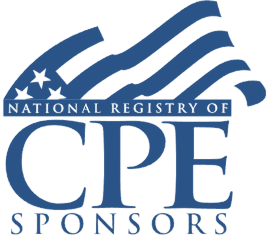- videocam On-Demand
- signal_cellular_alt Intermediate
- card_travel Estate Planning
- schedule 90 minutes
U.S.-Canadian Tax and Estate Planning for Dual Residents
Reconciling U.S. and Canadian Law on Trusts, Deemed Dispositions on Death, Situs Wills, and Wealth Transfers
Welcome! Strafford is now BARBRI! The expert courses you know from the trusted global leader in legal education.
Description
The long Canada-U.S. border and extensive ties between the two countries provide a significant amount of economic migration for citizens of both countries. Many U.S. citizens and permanent residents have property interests in Canada and vice-versa. Estate planning counsel and advisers must be able to identify the tax and wealth transfer planning rules and opportunities specific to U.S. and Canadian citizens with assets and presence in both countries.
The differences between U.S. and Canadian estate and wealth transfer rules present several challenges. Canada does not impose an estate tax. However, Canadian law provides for a "deemed disposition" of all capital assets on the death of a taxpayer. This disposition triggers a tax on all unrecognized gains and losses of Canadian-sourced assets.
While the U.S.-Canada tax treaty allows for reciprocal credits for U.S. estate tax and Canadian taxes, estate planners must reconcile the differences between the two countries' tax regimes and proactively minimize the tax impact of wealth transfers.
To make matters more complex, each province and state has its own set of estate and incapacity rules. The interaction of each set of rules needs to be navigated to ensure that the client’s succession plans are respected.
Listen as our expert panel provides guidance on how to plan the estates of clients with U.S. and Canadian tax presence, including interests in business entities, real estate, and financial accounts. The panel will cover the legal and tax considerations when planning for the disposition of each type of asset.
Presented By

Ms. Merritt is responsible for overseeing all aspects of the Orange County region’s fiduciary practice including oversight of all trust relationships, management and mitigation of fiduciary risk, review of all new trust business, and oversight of all court related matters including administrative petitions and fiduciary litigation. She also works with select Wealth Management clients and their advisors to develop integrated tax and estate plans based wealth management strategies. Prior to joining Northern Trust, she was a practicing attorney with a large business law firm and focused on domestic and offshore tax and estate planning for high net worth individuals.
As a cross-border tax lawyer, Mr. Reed assists clients with tax problems that span the US/Canada border with a particular emphasis on US taxation for Canadian corporations, trusts, and individuals. He has written widely on the topic of cross-border taxation and is the co-author (with Dick Pound of Stikeman Elliot) of A Tax Guide for American Citizens in Canada, technical articles on the U.S. tax treatment of the Tax Free Savings Account and Canadian mutual funds, and a series of columns for the National Post. One of this articles was given a technical award by the Canadian Tax Foundation. He is regularly invited to speak on cross-border tax issues.
-
This 90-minute webinar is eligible in most states for 1.5 CLE credits.
-
BARBRI is a NASBA CPE sponsor and this 90-minute webinar is accredited for 1.5 CPE credits.
-
Live Online
On Demand
Date + Time
- event
Wednesday, February 28, 2024
- schedule
1:00 p.m. ET./10:00 a.m. PT
Outline
- Planning a cross-border estate from an estate law perspective
- U.S. estate tax regime
- Canadian "deemed disposition" rules
- Tax treaty credit provisions
- U.S. and Canadian tax treatment of trusts
- Filing and reporting deadlines and timelines to consider
Benefits
The panel will review these and other essential issues:
- When is it appropriate for clients to have separate estate plan documents specific to the U.S. and Canada?
- How does the "deemed disposition" rule work to create a recognition event upon death or transfer of assets deemed to be Canadian-sourced?
- What are the tax treaty provisions to ameliorate dual taxation issues in estates and post-mortem tax events?
- How to avoid inadvertent gift tax triggering events on spousal transfers
- Options for transferring estate assets outside of an estate in Canada
NASBA Details
Learning Objectives
After completing this course, you will be able to:
- Ascertain how the "deemed disposition" rule works to create a recognition event upon death or transfer of assets deemed to be Canadian-sourced
- Understand key tax treaty provisions to ameliorate dual taxation issues in estates and post-mortem tax events
- Ascertain how to avoid inadvertent gift tax triggering events on spousal transfers
- Recognize options for transferring estate assets outside of an estate in Canada
- Field of Study: Taxes
- Level of Knowledge: Intermediate
- Advance Preparation: None
- Teaching Method: Seminar/Lecture
- Delivery Method: Group-Internet (via computer)
- Attendance Monitoring Method: Attendance is monitored electronically via a participant's PIN and through a series of attendance verification prompts displayed throughout the program
- Prerequisite:
Three years+ business or public firm experience at mid-level within the organization, completing complex tax returns and planning documents, supervising other accountants. Specific knowledge of concepts regarding taxation of foreign investments held by U.S. taxpayers; familiarity with tax treaty provisions.

BARBRI is registered with the National Association of State Boards of Accountancy (NASBA) as a sponsor of continuing professional education on the National Registry of CPE Sponsors. State boards of Accountancy have final authority on the acceptance of individual courses for CPE Credits. Complaints regarding registered sponsons may be submitted to NASBA through its website: www.nasbaregistry.org.

BARBRI CE webinars-powered by Strafford-are backed by our 100% unconditional money-back guarantee: If you are not satisfied with any of our products, simply let us know and get a full refund. Contact us at 1-800-926-7926 .
Unlimited access to premium CLE courses:
- Annual access
- Available live and on-demand
- Best for attorneys and legal professionals
Unlimited access to premium CPE courses.:
- Annual access
- Available live and on-demand
- Best for CPAs and tax professionals
Unlimited access to premium CLE, CPE, Professional Skills and Practice-Ready courses.:
- Annual access
- Available live and on-demand
- Best for legal, accounting, and tax professionals
Unlimited access to Professional Skills and Practice-Ready courses:
- Annual access
- Available on-demand
- Best for new attorneys
Related Courses

Estate Planning for Multinational Families: Impact of OBBBA, Key Issues for Counsel
Thursday, November 20, 2025
1:00 p.m. ET./10:00 a.m. PT

Disclaimers and Estate Planning
Available On-Demand
Recommended Resources
Building Your Book: Strategies to Secure Long-Term Success
- Business & Professional Skills
- Career Advancement
- Talent Development